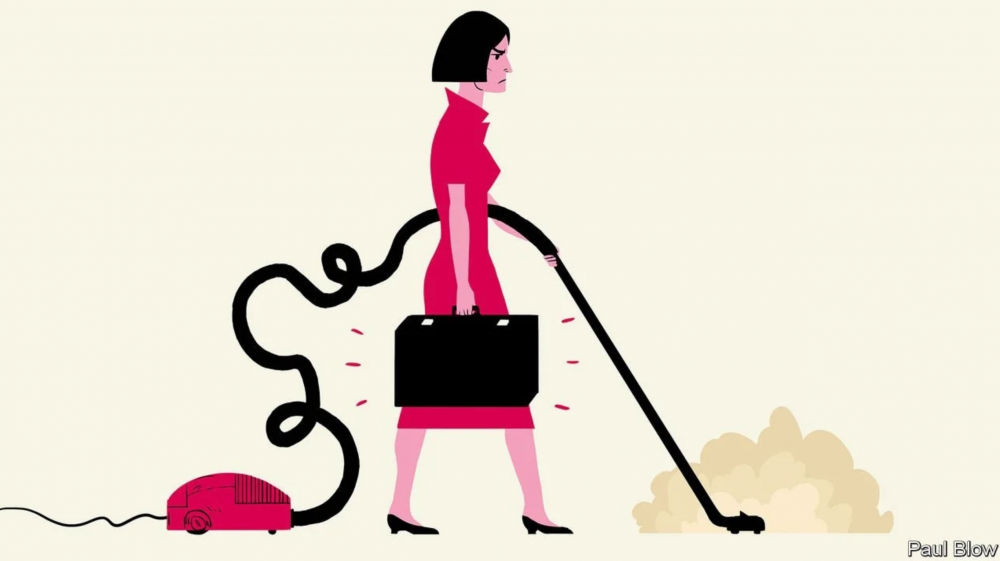
RIA BHANDARKAR – NOVEMBER 2ND, 2021
EDITOR: CHAZEL HAKIM
In 2006, community college dropout Sophia Amoruso started Nasty Gal, an eBay page where she upsold vintage clothing from local thrift shops. A former art school hopeful, Amoruso used her design skills to model and photograph each item, selling about 25 products a week shortly after launching her page. Soon after, she left eBay, bought her own studio, and by 2010, secured millions of dollars in capital from Silicon Valley. By 2012, she was a multimillionaire and one of the most popular female CEOs in the country.
In 2014, Amoruso released the memoir/self-help book #GirlBoss to capitalize off of her success and popularity. While the book was mostly mundane (including recommendations such as “be nice at work”) and her career since then has been marred by bankruptcy and scandal, the eye-catching title has become dominant in feminist pop culture. The term, like Sheryl Sandberg’s memoir-turned-nonprofit Lean In before it, helped build an image of the ambitious female entrepreneur, whose success would “trickle down” to the female employees below her. To some it was empowering, though for others it was another instance of corporate feminism, a notion which prioritizes putting women in power over creating structural change.
Like Sophia Amoruso, Valerie Mekki also made her career in the fashion industry, working in merchandising for nearly two decades. In April 2020, she lost her job and in a June 2021 NPR interview, revealed that she has still yet to find full-time employment. Even in a country facing labor shortages, there are plenty of women like Mekki who’ve yet to find job opportunities. Never has the inutility of corporate “girlboss” feminism been more obvious than during the COVID-19 pandemic. Nearly 1.8 million women have left the workforce during the pandemic, with an estimated 2.3 million fewer women working now than what was expected without a disruption.
Unfortunately, the “Lean In” and “GirlBoss” movements rely on the assumption that women looking for jobs or promotion face obstacles from their socialization, not any other, external factors. While both philosophies can successfully tackle more internal issues such as self-image or perceived gender expectations, their scopes are too small. In reality, most women cite sexual harassment, the burden of finding childcare, and hiring discrimination as the biggest reasons that they’ve struggled in their job search. Parenting and housework, in particular, are rarely acknowledged despite essentially being a “second shift” for working mothers. Real change to combat gender inequality in the workforce requires more than empty calls for self-empowerment; economists must reexamine the definitions of work and productivity to be more inclusive of women straddling multiple roles.
The Rise of Corporate Feminism
Both GirlBoss and Lean In have been widely adopted and criticized. The latter in particular had the distinction of being one of the first widespread corporate feminist messages during the age of social media. Its critics include Former First Lady Michelle Obama, who argued that “it’s not always enough to lean in, because that s**t doesn’t work all the time” and feminist scholar bell hooks, whose article “Dig Deep: Beyond Lean In” pointed out that Lean In philosophy ignored the realities of class and racial marginalization.
There is plenty of research to support their claims that Lean In could do more harm than good. A Duke University study showed 1,000 people videos and articles from Sandberg, while another group of 1,000 saw materials about social factors affecting professional women. The psychologists discovered that, while the first group found Lean In empowering, they were also more likely to blame women for their failures and more critical of widespread reform.
That emphasis on female success is almost ironic considering the recent events in Amoruso and Sandberg’s careers. Amoruso stepped down from Nasty Gal in 2015. and the company filed for bankruptcy in 2016. Meanwhile, Sandberg was expected to turn to politics if Former Secretary Hillary Clinton won the presidential election in 2016. Instead, she faced backlash for her inaction while Russian hackers manipulated Facebook during the election.
COVID and the Workforce
To its credit, today, Lean In has increased its reach beyond its founders’ limited ideology, putting forth an effort to research gender inequality in the workforce as well as to make that data widely available. In fact, the Lean In nonprofit has demonstrated concern over the COVID-19 women’s labor crisis. After publishing a study with McKinsey & Co. in October 2020 revealing that 865,000 women (compared to 216,000 men) had left the workforce in August and September, CEO Rachel Thomas declared that “if we had a panic button, we’d be hitting it.”
This labor crisis has many structural factors which made it almost inevitable. A recent Deloitte report indicates that women have not returned to work due to a different work-life balance during the pandemic. Nearly 80% of women surveyed said their workload has increased during the pandemic, and 66% of women did the majority of childcare and household work while home. Others voiced their concerns about their employers’ commitment to gender equality, with many, especially women of color and LGBT+ women, mentioning high levels of sexual harassment.
The workload factor is especially interesting considering the economic reasons behind the decision to not seek employment. In a profile for the New York Times, labor activist Silvia Federici argues that mainstream economics fails to acknowledge “reproductive labor,” or the household work that has typically been relegated to women. Economic measures of productivity, such as Gross Domestic Product, don’t include unpaid domestic work; consequently, that ideology bleeds into the way economic and workplace policies are created.
That oversight is especially relevant in a pandemic economy. In her article “America’s Recovery from the 2020 “Shecession”: Building a Female Future of Childcare and Work”, political scientist Victoria M. DeFrancesco Soto writes that the COVID-19 crisis was America’s first female recession, blaming the lack of policy focused on childcare (especially for women of color and those in lower income households). While corporate feminists and economists may ignore the productive effects of these policies, they are now more needed than ever.
Seeking Work as a Woman
Along with childcare policy, many economists have advocated for more reform in the hiring process. In the paper “When Gender Discrimination Is Not About Gender” written by Harvard Business School professors Katherine B. Coffman and Christine L. Exley in collaboration with Stanford economics professor Muriel Niederle, gender discrimination is divided into two categories: statistical and taste-based. Statistical discrimination is rooted in the belief that women and other gender minorities have a lower average skill level than their male counterparts, making them worse employees. Taste-based discrimination is more arbitrary and considers favoritism or bias towards one group based on stereotypes.
Statistical discrimination is harder to break down. In the paper, Coffman, Exley, and Niederle conducted an experiment where they gave employers two groups of prospective candidates, one with women and one with men, with the latter group having a higher average performance; men were hired at a higher rate. However, when they relabeled the women group as people born in an odd month and the men group as people born in an even month, the odd month group still lost out. Ultimately, employers were more biased towards a group with a higher average performance, even if an individual candidate within the lower-performing group was the more qualified in their trial.
How can Lean In and other forms of empowerment-based feminism negate the fact that women are considered lower performing on average? The experiment indicates that structural issues which make women on average less qualified matter more in the hiring process than individual women attempting to stand out. It can be more useful to directly address the reasons that women are considered and tend to be behind their male peers.
The Real Solutions
The labor market has historically been biased against women, leading to worse economic outcomes for them when compared to men. As mentioned above, women are often penalized for choosing to become parents in a way that fathers rarely are. Many economists in response have cited child-care affordability, individual taxation of married couples, pay transparency, and parental leave as key policies which can decrease the gender gap in the labor market.
These policies don’t have to be a burden on the government. Some proposals for affordable childcare argue that the costs of creating a more work-supportive and income-supportive form of childcare would be offset by the increase in labor force participation among mothers and earlier skill development for children in these programs. The effects of California’s first-in-the-nation paid parental leave program are even evidence of this; in the long run, paid parental leave increased maternal employment and led to more long term economic benefits.
In fact, many of the current workplace policies that disadvantage women don’t have as strong of an economic benefit. In the paper “Gender Inequality and Bargaining in the U.S. Labor Market,” political economist Nancy Folbre describes the difference in bargaining power between men and women in the workplace due to the increased burden of care work on the latter. She challenges neoclassical economic approaches which emphasize individual choices, similar to the Lean In or GirlBoss movements, over collective identity. In mainstream economics, pay is assumed to be determined by value added, an idea which seems to justify pay and hiring discrimination against women. In reality, however, policies which reward overtime work with extra pay, a practice which harms female caregivers, are not more productive for the economy.
As described by Silvia Federici, neoclassical economics ignores the economic contribution of family care, making current policies inefficient; the gap between male and female employment only hurts productivity. In fact, if gender gaps in the labor market were decreased by 2025, GDP would decrease in all regions and global tax revenue would grow by $1.5 trillion. To reach that goal, collective action is needed, an idea which is not present in current individualist economic models.
Conclusion
Unfortunately, despite their popularity, corporate feminist movements such as Lean In and GirlBoss are based on the flawed assumptions that economic outcomes are determined by individual outcomes, not structural factors and widespread policy. They rely on the idea that challenging stereotypes and dedicating more free hours to employers are necessary to increase female employment and leadership.
The COVID-19 pandemic and subsequent increase in female unemployment should be a cautionary tale. Most women cited employment discrimination and increased family responsibility as reasons why they were unlikely to return to the workforce, a reality which would harm productivity during post-pandemic economic recovery. Corporate feminism doesn’t acknowledge care work; in fact, it doesn’t challenge mainstream economic ideas at all.
In order to increase women’s participation in the workforce during this labor shortage, policymakers and economists need to redefine the concept of work to include the important economic contributions made in households. This could lead to the development of more inclusive policies which accommodate parents and decrease the barriers which lower the average professional women’s qualifications. In order to create meaningful progress, feminist business leaders need to do more than just “lean in” to the system. They must increase women’s bargaining power in the hiring process through structural change.
Featured Image Source: The Economist
Disclaimer: The views published in this journal are those of the individual authors or speakers and do not necessarily reflect the position or policy of Berkeley Economic Review staff, the Undergraduate Economics Association, the UC Berkeley Economics Department and faculty, or the University of California, Berkeley in general.



